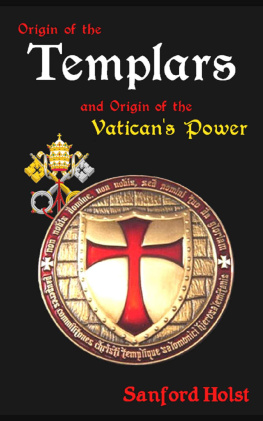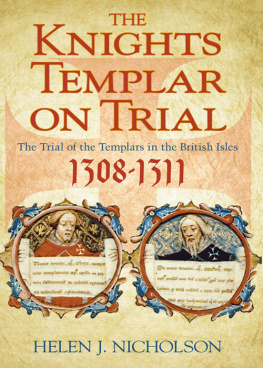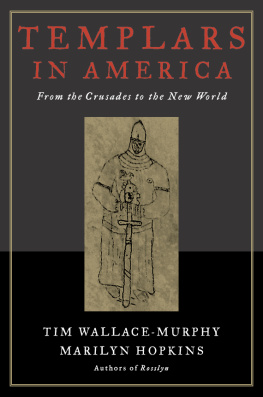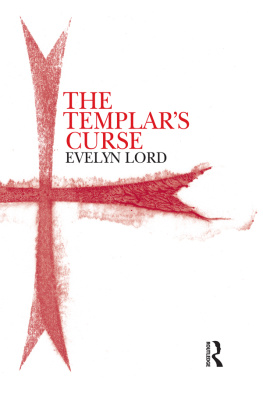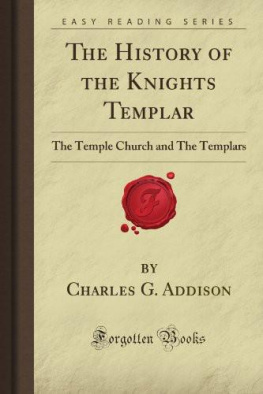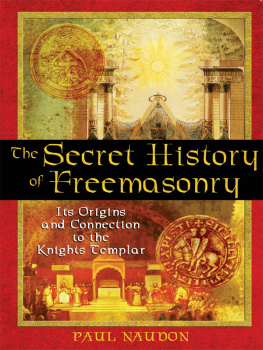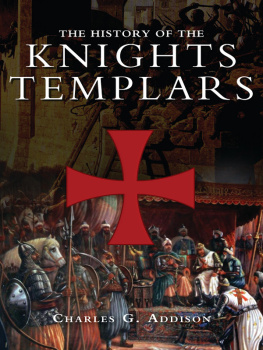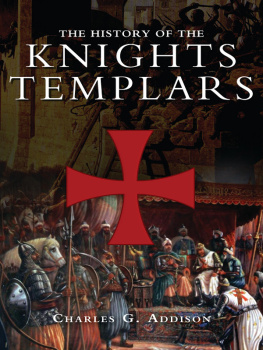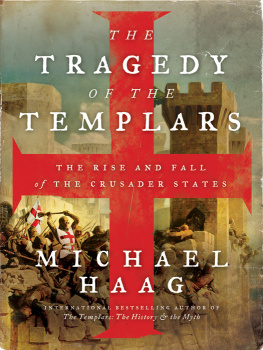.
To Aid a Distressed Brother
One of the most often-repeated promises made in Masonic lodge rooms is that each brother will come to the aid of a distressed Master Mason. This is reinforced by the ritual that raises a brother to the degree of Master Mason. In that ceremony he is taught how to give the Grand Hailing Sign of distress. This Hailing Sign can be shown in a public place and is immediately recognized by other Master Masons, who are then obliged to provide whatever relief they can.
That obligation echoes the practice of the Knights Templar concerning their brothers. No knight of that Order could leave a brother in distress on the field of battle. While any remained, all had to remain. Only when all the knights were brought to the Templars Beauceant banner could they then leave, all the brothers together. Similarities between Freemasons and Templars seem to be part of the reason why questions of a connection between these two secretive orders keep being raised.
Among Freemasons, that strong commitment to brothers found expression not only in the lodge room but also on the battlefield, as George Washington amply demonstrated. He became a Mason at the young age of twenty, long before distinguishing himself on fields of war and in the seat of government.

Fig. 1 George Washington attired as Master
__________
He was even said to have shown favoritism by choosing fellow travelers as his officers during the American Revolutionary War. Washington unabashedly displayed his attachment to the rules of this invisible brotherhood on more than one public occasion, including the aftermath of a battle.
In the 46th regiment of the British army there was a traveling Lodge, holding its Warrant of Constitution under the jurisdiction of the Grand Lodge of Ireland. After an engagement between the American and British forces, in which the latter were defeated, the private chest of the Lodge, containing its jewels, furniture and implements, fell into the hands of the Americans. The captors reported the circumstances to General Washington, who at once ordered the chest to be returned to the Lodge and the regiment, under a guard of honor. The surprise, says the historian of the event, himself an Englishman and a Mason, the feeling of both officers and men may be imagined, when they perceived the flag of truce that announced this elegant compliment from their noble opponent, but still more noble brother. The guard of honor, with their music playing a sacred march [carried] the chest containing the Constitution and implements of the Craft borne aloft, like another ark of the covenant, equally by Englishmen and Americans, who lately engaged in the strife of war.
Albert G. Mackey
To aid the enemy in time of war is commonly regarded as treason. This is a simple rule understood in every nation on Earth. But Freemasonry seems to have always marched to the beat of a different drummer and lived by a different set of rules.
George Washington did not appear to concern himself that some might question his loyalty because of this action after battle. His commitment to help brothers in distress overcame other considerations. Since he was later elected President of the United States, the people of his day apparently accepted these actions and his deep involvement in the practices of Masonry.
How did these practices begin? What driving force behind Freemasonry caused it to survive for so many centuries, first in secret and then partially revealed as it is today? And what was contained in the other obligations its members swore in secret to always conceal and never reveal? In truth, much of the mystery-shrouded activities of Freemasonrys early years were so tightly bound and so little shared that they eventually fell from view. That simple reality is commemorated in Masonic ritual today by the lament that the original Master Masons secrets have been lost, and only a substitute for them remains. The inciting things responsible for creating and propelling this clandestine society to great heights of membership and influence are now no longer consciously known by Freemasons. Yet traces of them remain in the curious words, symbols, and pieces of ritual that are still used and practiced despite having little or no known meaning today.
When asked, most people inside and outside of Freemasonry readily admit they do not know much about the early days of Masonry prior to 1717. Outside of Masonry, people tend to fill this gap by embracing a broad spectrum of assumptions that are influenced by everything from anti-Masonic tirades to novels that show Masons protecting the bloodline of Jesus Christ. The people and actions responsible for Freemasonrys rise to a position of considerable influence have to compete with all those things. Fortunately, the reality is sometimes even more intriguing than many of those other stories, as you will soon see.
Freemasons have made up for the lack of records about their societys early days by launching a veritable cottage industry of creative story-making. In these accounts Freemasonry has been traced back to almost every famous man in historyeven to Adam in the Garden of Eden. Masons usually call these stories traditions rather than history, as a nod to their questionable nature. Even so, a surprising number of Masons treat many parts of them as being factual.
The actual history of Freemasonry is strange enough already. This widespread organization for many years quietly exerted a strong influence on society, magnified by the fact that it was, and still is, the largest fraternal society in the world. And with this came controversy. Accusations against Freemasons included charges of treason. Were those condemnations true or false? George Washington was not the only one affected by this. No doubt the king of England felt justified in viewing all perpetrators of the American Revolution as being guilty of treason. Whether individuals agreed or not depended on which side of the battle lines they stood.
Freemasons were also accused of heresy. Clearly the popes in Rome viewed Protestants as being guilty of heresy. And Freemasonry included Protestants as well as Catholics and members of other religious groups. Again, those charges were valid or not depending on which side of these lines you stood.
For better or worse, the many conflicts and confrontations that occurred over the years steadily shaped Freemasonry, and helped shape the society in which we live.
In early Freemasonry the obligations of secrecy were so well followed that it really was a secret society, as many have noted.
Prior to the year 1717 the Masonic order was a true secret society; not just an organization with secret signs and secret handgrips, but a widespread society whose very existence was a secret.
John J. Robinson
When Freemasonry came out into the open in that year and shed some surface layers of secrecy, it entered a new manner of existence. It became what has aptly been called a society with secrets. Yet its remaining layers of secrecy still ran deep. While more of these have been revealed over the years, it turns out that the most fascinating secrets still remain. They go beyond the rituals and observances of the lodge to encompass all the unspoken acts and practices of the secret society whose heritage is continued in Masonry today.


